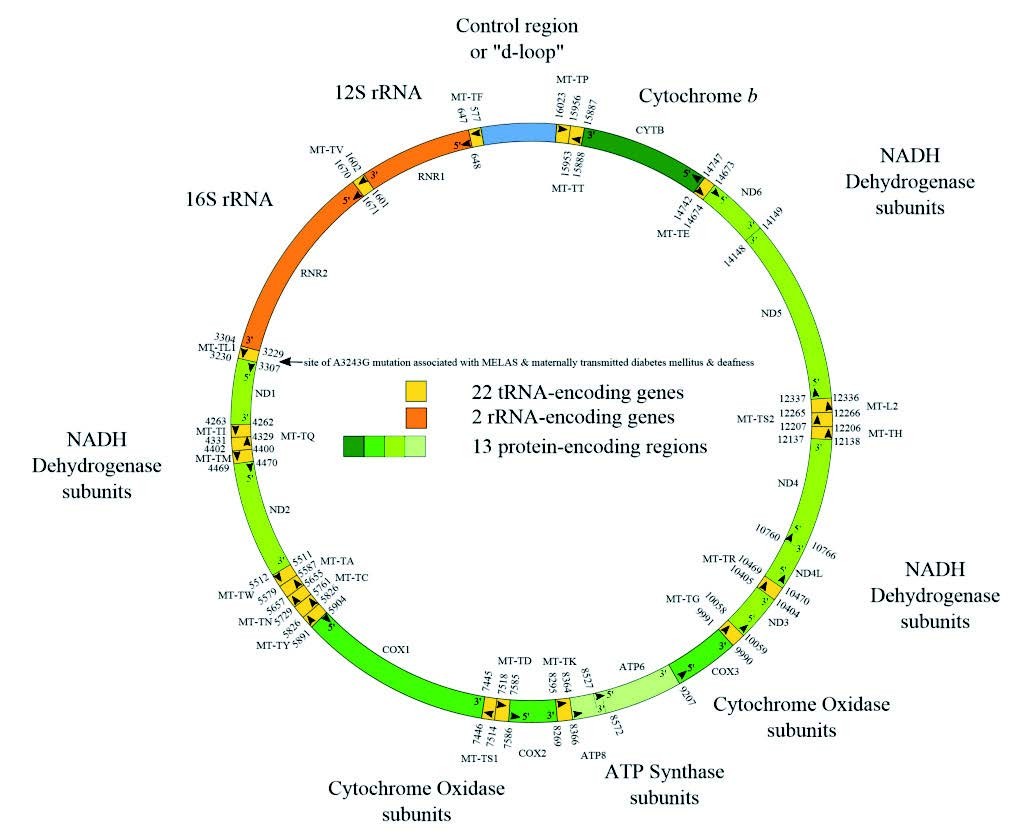The term ‘mitochondrial disorders’ refers to a large and heterogeneous group of genetic disorders, all of which lead to aberrations of the mitochondrial respiratory chain. A mitochondrial disease may be a result of mutations in nuclear DNA (genes residing on human chromosomes) or of mutations in mitochondrial DNA genes (DNA residing in the cell’s mitochondria). Therefore, the type of inheritance may vary, but a disease caused by mutations in the mitochondrial DNA is invariably inherited from the mother (maternal inheritance) and therefore males will not transmit the disease to their offspring. Diagnosis may also be difficult in the majority of cases, although some diseases (e.g. Leber hereditary optic neuropathy-LHON) are more easily diagnosed. Furthermore, the phenotype of mitochondrial diseases varies, some affecting multiple organs-functions (e.g. hearing, heart, etc.) or a single organ (e.g. the eye). In general, diagnosis relies on a detailed medical and family history, and genetic testing for specific mitochondrial DNA mutations will confirm the presence of the particular disorder.
Mitochondrial DNA disorders

The estimated prevalence of all mitochondrial diseases is approximately 1 in 10,000 births.
Please find below a summary list of most mitochondrial DNA disorders and their corresponding mitochondrial DNA mutations.
Cardiomyopathy – m.3243 A>G, m.4269 A>G
Chronic progressive external ophthalmoplegia – m.3243 A>G, m.4274 T>C, deletions
Diabetes and deafness – m.3243 A>G, m.12258 C>A
Encephalomyopathy – m.1606 G>A, m.10010 T>C
Kearns-Sayre syndrome – deletions
Leber hereditary optic neuropathy (LHON) – m.11778 G>A, m.14484 T>C, m.3460 G>A
NARP/Leigh syndrome – m.8993 T>G, m.8993 T>C
MELAS – m.3243 A>G, m.3271 T>C, m.3251 A>G
MERRF – m.8344 A>G, m.8356 T>C
Myopathy – m.14709 T>C, m.12320 A>G
Non-syndromic deafness – m.7445 A>G
We perform automated bi-directional fluorescent DNA sequencing of the mitochondrial DNA or targeted mutation analysis, as well as deletion/duplication analysis, thus detecting the presence of the majority of pathological mutations for the above mentioned disorders.
IMPORTANT NOTE: For the sensitive detection of mitochondrial DNA mutations, analysis must be performed from DNA extracted from a skeletal muscle biopsy sample, as the presence of the mutation may not be detected in DNA from a peripheral blood sample.